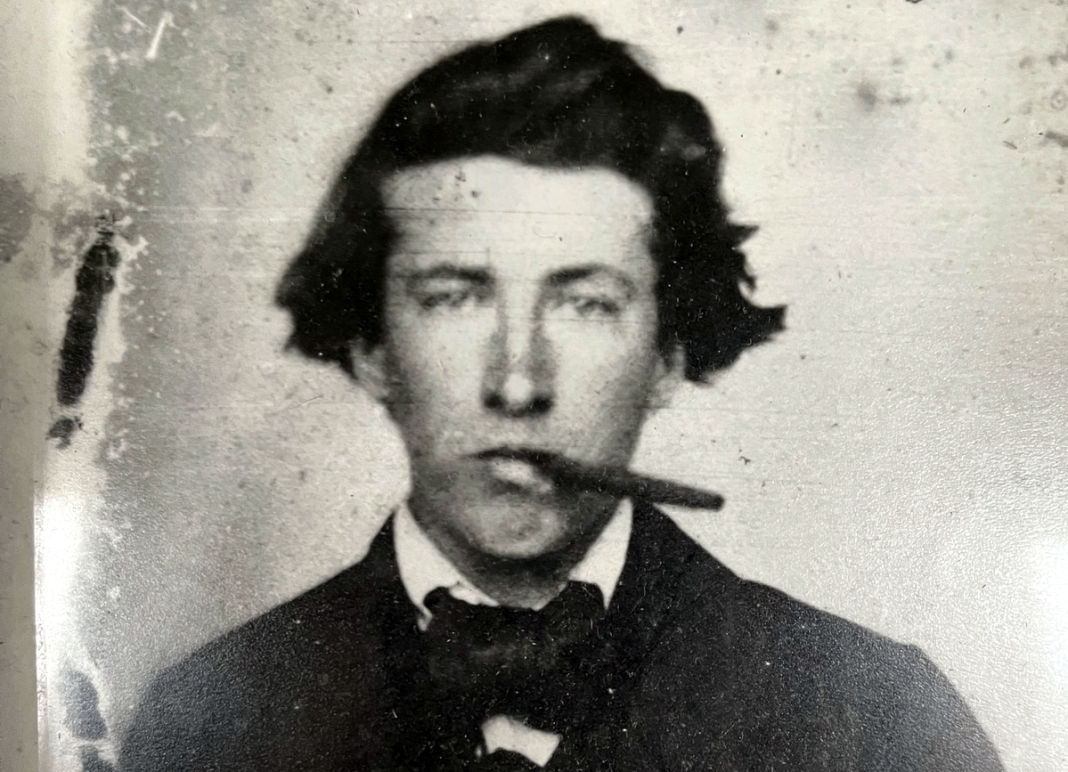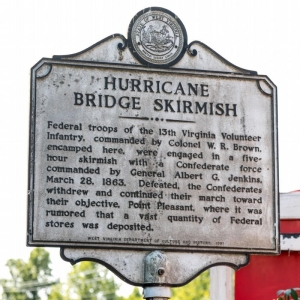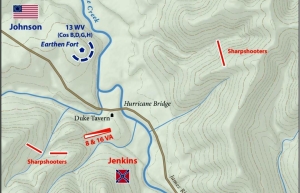HURRICANE, W.Va. — Early research on a Civil War engagement in West Virginia at Hurricane Bridge underestimated the number of soldiers involved. This led historians to mislabel the "battle" as a "skirmish," according to historian Philip Hatfield, Ph.D.
“A skirmish implies this small, sort of insignificant affair, but there were many more troops involved,” says Hatfield, author of The Battle of Hurricane Bridge, published in 2019.
Between 800 and 1,000 troops fought at the battle at Hurricane Bridge in 1863, says Hatfield.
Military records, particularly regimental muster rolls, indicated the Confederates had approximately 600 men. The Union had between 240 and 300 on guard in an earthen fort on the morning of the battle, and approximately 80 more Union soldiers were in the regimental field hospital at Hurricane Bridge.
On March 28, after five hours of continuous fighting, Union troops of the 13th West Virginia Volunteer Infantry under Captain James William Johnson defeated General Albert Jenkins’ Confederates, who then retreated toward Point Pleasant.
“The outcome of the battle had a longer lasting significance, in that it enabled the Union army to maintain control of the James River and Kanawha Valley Turnpike, a major supply line,” Hatfield says.
The officers of the 13th West Virginia involved in the fighting referred to it as a battle themselves. Regimental records at the West Virginia State Archives list principal battles and engagements fought during the war, with the first cited being the battle at Hurricane Bridge.
“I think the logic is if the soldiers who fought there called it a battle, then we should, too,” Hatfield says. “It was significant enough that they included it on a list of their major engagements.”
The 13th West Virginia later fought in the Shenandoah Valley at Winchester, Kearnstown, and Cedar Creek.
“Those were very bloody, large engagements, and so this wasn’t anything comparable in terms of the size, but in their minds, they saw it as a very important action,” Hatfield says.
“The Union regiments from West Virginia get so little attention and credit in the bigger Civil War literature, and so I just think it’s important that we tell these stories,” he says.
In his research, Hatfield uncovered evidence for the battle, the Union garrison, and the nearby field hospital.
“More recently, we’ve dug quite a few musket balls on the lands around that area that show us where the fighting occurred,” he says. “We have a really good idea of the troop locations and the intensity in the scale of the battle from that, as well as what’s been written about it. The original sources talk a lot about the troop position.”

Steps away from the site of this Civil War battle, which intersects modern US-60 and WV-34, the City of Hurricane is building a park that will include space to honor the history of the ground.
City officials, such as Hurricane Mayor Scott Edwards, are working with Civil War Trails to put in historical markers and signage when the park is complete in the next few years.
“We’re working with the Civil War Trails, and then there’ll be more marketing around the why, why is it called Hurricane Bridge,” Edwards says. “We want it to be complete.”
So far, the park—purposefully named after the Civil War battle—has state-of-the-art fields, fencing, a goalpost, a press box for Hurricane Youth Football, walking trails, pickleball courts, and an all-wood playground. The 67-acre park will also house baseball and softball fields.
For information on visiting the battlefield, contact the Putnam County Convention and Visitors Bureau.
Sign up for a FREE copy of West Virginia Explorer Magazine in your email weekly. Sign me up!




